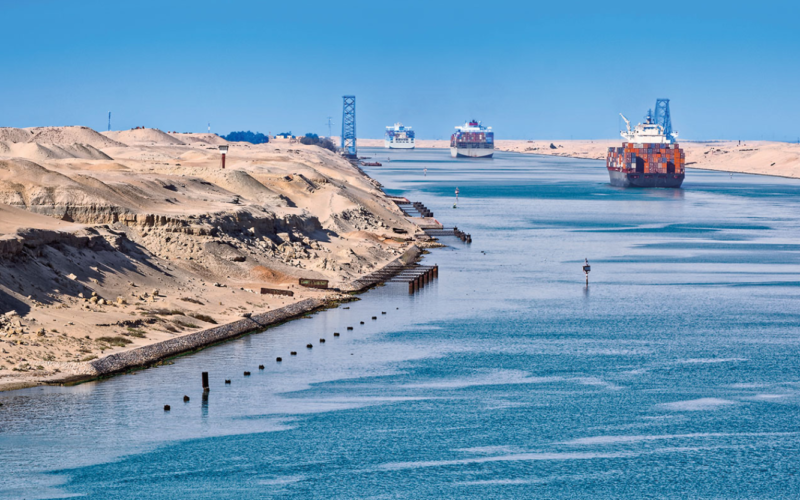In a development with significant implications for global maritime traffic, the eastern lane of Egypt’s Suez Canal has witnessed a suspension in navigation following a collision between a container ship and a bridge, as reported by Egypt’s Al Qahera News TV. The incident has raised concerns about the potential impact on the vital waterway, which serves as a crucial conduit for international trade, linking the Mediterranean Sea to the Red Sea.
The Suez Canal, a man-made waterway inaugurated in 1869, holds immense strategic importance in facilitating maritime trade by providing a direct passage for ships traveling between Europe and Asia. Connecting the Mediterranean and Red Seas, the canal significantly shortens the maritime journey around the southern tip of Africa, reducing transit times and fuel costs for vessels.
The reported collision involving a container ship and a bridge in the eastern lane of the Suez Canal has led to the temporary suspension of navigation. The specifics of the incident, including the extent of damage to the vessel, the bridge, and the potential environmental impact, remain key points of concern. Authorities are likely to launch investigations to determine the causes and consequences of the collision.
Any disruption to navigation in the Suez Canal has ripple effects on global maritime traffic. The canal serves as a vital conduit for a significant portion of the world’s goods, with a wide array of vessels, including container ships, oil tankers, and bulk carriers, relying on its efficient operation. The interruption caused by the collision has the potential to impact shipping schedules, increase transit times, and influence global trade dynamics.
In the wake of the collision, emergency response teams and canal management authorities are likely to play a crucial role in assessing the situation and initiating necessary measures to resume normal navigation. Swift and effective action is essential to minimize disruptions and mitigate any potential economic repercussions resulting from prolonged canal closure.
The Suez Canal has been no stranger to challenges and disruptions in recent times. In March 2021, the Ever Given, one of the world’s largest container ships, ran aground in the canal, causing a week-long blockage that garnered international attention. The incident highlighted the vulnerability of global supply chains to disruptions in key maritime arteries.
The eastern lane collision in the Suez Canal adds another layer to the complex geopolitical and economic considerations associated with maritime trade routes. The incident may prompt discussions on the resilience of global supply chains, the need for alternative transit options, and the ongoing challenges faced by key maritime passages in an ever-evolving geopolitical landscape.
As efforts are underway to address the aftermath of the collision, international collaboration becomes paramount in ensuring the safety and efficiency of maritime transport. The incident underscores the shared responsibility of nations and organizations in safeguarding crucial waterways, implementing safety measures, and responding effectively to emergencies that may disrupt global trade.
In conclusion, the temporary halt in navigation in the eastern lane of the Suez Canal due to a collision between a container ship and a bridge raises concerns about the impact on global maritime traffic and underscores the complex challenges associated with key waterways. As authorities work towards resolution, the incident prompts reflections on the resilience of international supply chains and the collaborative efforts needed to ensure the safety and efficiency of vital maritime passages.








